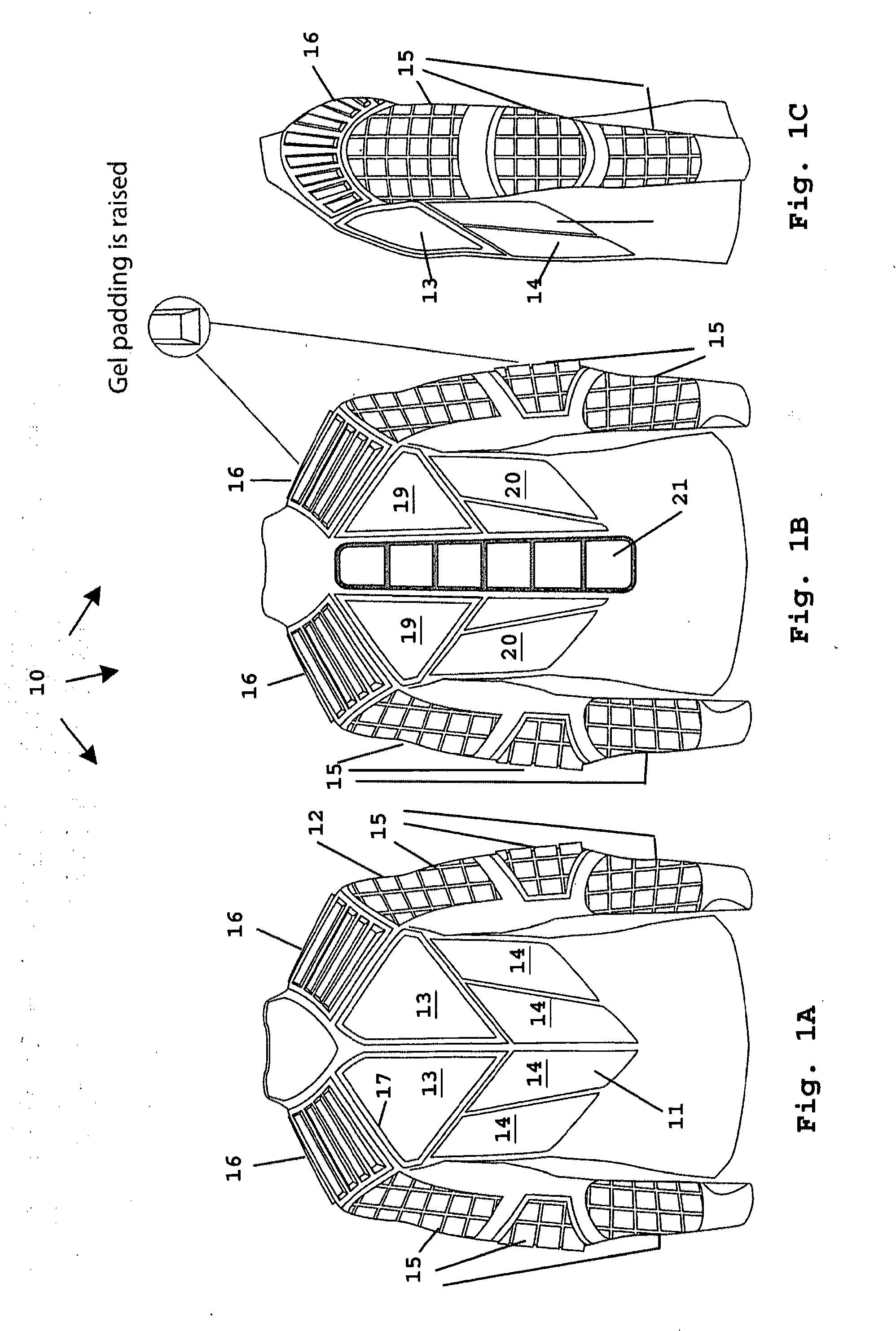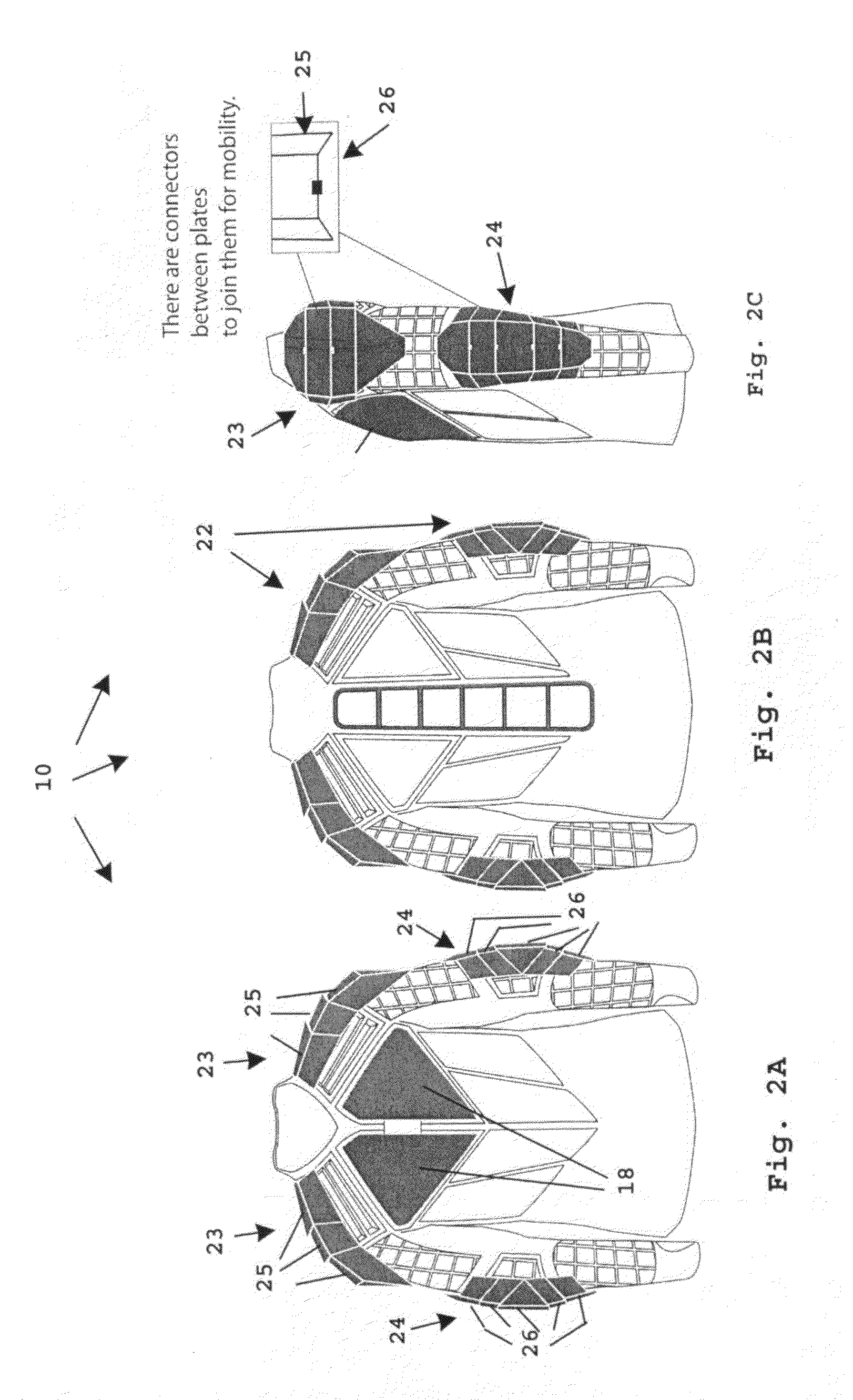Protective athletic garment
a technology for athletic garments and athletics, applied in the field of protective athletic garments, can solve the problems of ineffective blocking of the line, inability to balance protection versus mobility, and most sensitive outer parts of the elbow, so as to reduce the orthogonal force component, dampen the force, and dissipate the impact for
- Summary
- Abstract
- Description
- Claims
- Application Information
AI Technical Summary
Benefits of technology
Problems solved by technology
Method used
Image
Examples
Embodiment Construction
[0020]Referring to FIGS. 1A and 1C, the front and sides of the exemplary upper torso protective garment 10 include both interior padding 11 and exterior padding 12. The interior chest padding 13 over the pectorals comprises two triangular pads of open cell polyurethane foam, approximately two to three inches thick. The interior rib-cage padding 14 comprises four semi-trapezoidal pads, likewise consisting of open cell polyurethane foam, approximately two to three inches thick. The exterior arm padding 15 comprises three clusters of raised cubical gel cells, approximately one-quarter to one-half inch in height, positioned over the outer surfaces of the upper arm, elbow and forearm. The exterior shoulder padding 16 comprises multiple narrow raised gel strips, approximately one-quarter to one-half inch in height, running front to back across the clavicle area. The outer garment layer above each of the pectorals is optionally provided with a pocket 17 into which a rigid breast plate 18 (...
PUM
 Login to View More
Login to View More Abstract
Description
Claims
Application Information
 Login to View More
Login to View More - R&D
- Intellectual Property
- Life Sciences
- Materials
- Tech Scout
- Unparalleled Data Quality
- Higher Quality Content
- 60% Fewer Hallucinations
Browse by: Latest US Patents, China's latest patents, Technical Efficacy Thesaurus, Application Domain, Technology Topic, Popular Technical Reports.
© 2025 PatSnap. All rights reserved.Legal|Privacy policy|Modern Slavery Act Transparency Statement|Sitemap|About US| Contact US: help@patsnap.com



